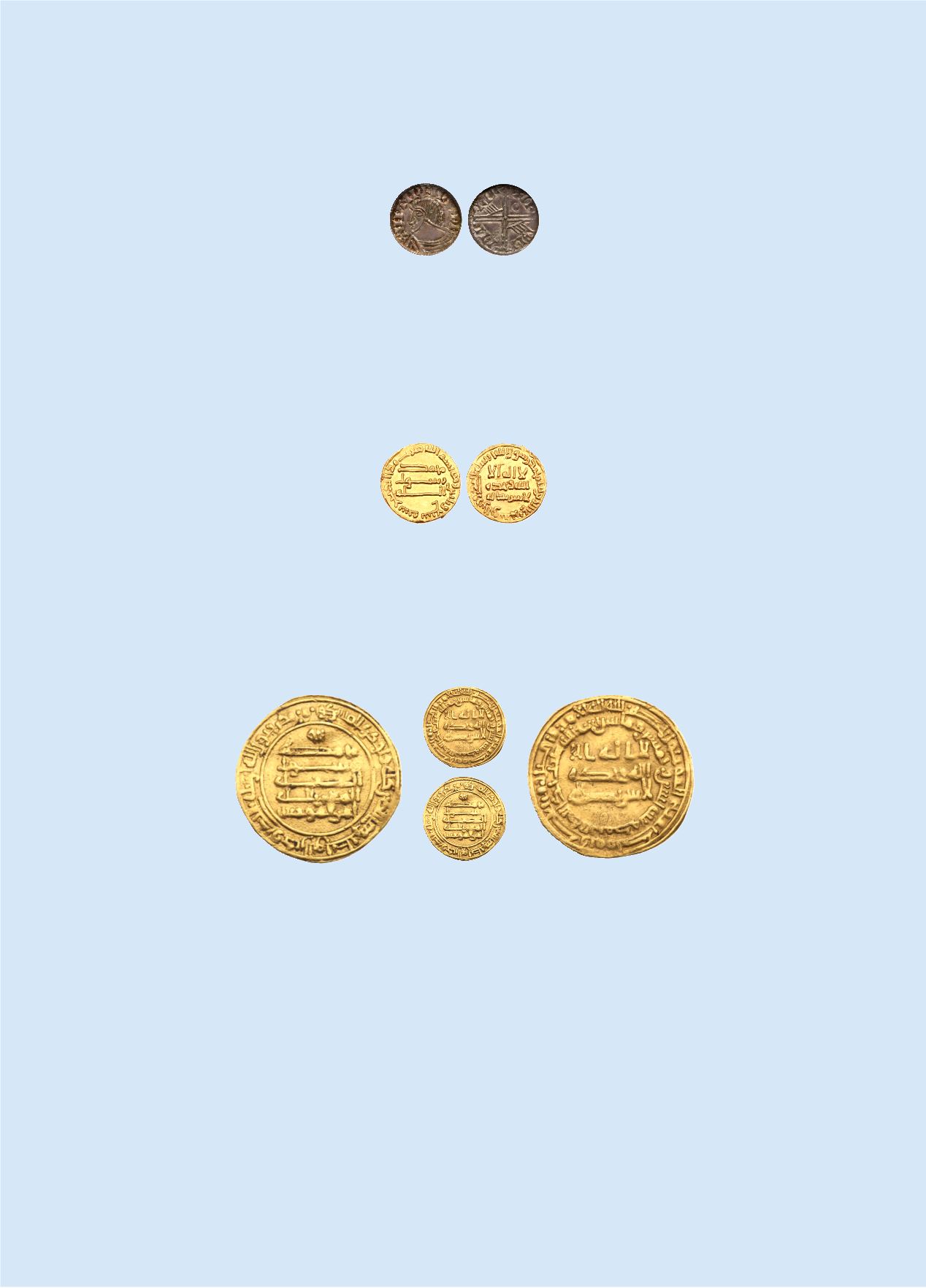

IRELAND
1410
Hiberno Norse. Silver Penny, phase III (1035-1060). Silver Penny, undated, Long Cross and Hand type.
Large crude head left, no hand. Rev. Voided cross, two crude hands in first and third quarters, large pellet
in second quarter, blundered legends (S 6132/6132A).
Rare.
NGC graded MS-65.
$ 3,400
ex V M Brand Collection.
ISLAMIC
1411
Abbasid. Abu-Ja’far’ Abdallah al-Mansur (754-775). Gold Dinar. 4.25 g. (137h, A212). Test marks and filing
on edge. Extremely fine.
$ 300
Very Rare Gold Dinar
1412
Abbasid. al-Mu’tazz (251-255h). Gold Dinar, 252h (Makka), 4.11g. (Bernardi 162 Ef, two refs).
Very rare.
Very fine.
$ 85,000
In 160h / 777 CE the Makam Ibrahim, the stone behind which the Prophet Muhammad prayed when he performed the
circumnambulation of the Holy Ka’ba, and which bears the footprints of the Prophet Ibrahim impressed into its surface at the
time that he was building the Holy House, was brought to the abode of al-Mahdi in Makka when he performed the pilgrimage. In
the next year, when the makam was raised carelessly by one of its keepers, it fell down and cracked; it was repaired on the order of
al-Mahdi and its upper and lower parts were braced with gold. Al-Mutawakkil in 241h / 655-656 CE improved the pedestal of the
makam, embellished the makam itself with gold and ordered the building of a cupola over the makam (cf al-Sinjari, Mana’ih al-
karam bi-akhbar Makka wa’l Haram, ms. Leiden fol. 120b). In 252h / 866 CE the makam was stripped of its gold by the Governor
of Makka Ja’far bin al-Fadl; the gold was then melted down for minting Dinars, which he spent in the struggle against the rebel
Isma’il bin Yusuf bin Ibrahim (see al-Sinjari op.cit. fols. 120a ult. - 120b; for Isma’il bin Yusuf see al-Fasi, al-’Ikd al-thamin, ed.
Fu’ad Sayyid, Cairo 1383/1963, iii, 311, no 383). A thorough restoration of the Makam was carried out in 256h / 870 CE by the
Governor ‘Ali bin al-Hasan al-Hashimi (see al-Fasi op. cit. vi, 151, no. 2050).
The gold for the famous Dinar of the caliph al-Mu’tazz dated 252h, which so eloquently symbolises the importance of this sacred
spot, came from the covering of the Makam Ibrahim.
(The information for this note is based on the Encylopaedia of Islam, 2nd edition).



















